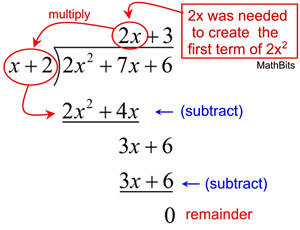Topics for Today:
Although we discussed direct variation several months ago, as we discuss related topics, I felt it was a good idea to revisit this topic. Direct variation refers to how two variables are related to each other. In algebraic terms, a function in the form of y = kx, where k ≠ 0, is a direct variation.
This function is similar to our slope-intercept form of a line (y = mx +b).
For direct variations, there is no y-intercept, and all of these functions must pass through the origin (0, 0). We are effectively dealing with part of our slope-intercept form, y = mx.
For direct variations, we use the variable "k" to represent the slope, which is also our constant of variation.
Vocabulary: direct variation, constant of variation
Sections Covered in Textbook:
5-5: Direct Variation (pages 261-266)
Resources & Tutorials:
1)
What is the formula for direct variation?
2)
What is the constant of variation?
3)
How do you use the formula for direct variation?
4)
Direct Variation Class Notes








